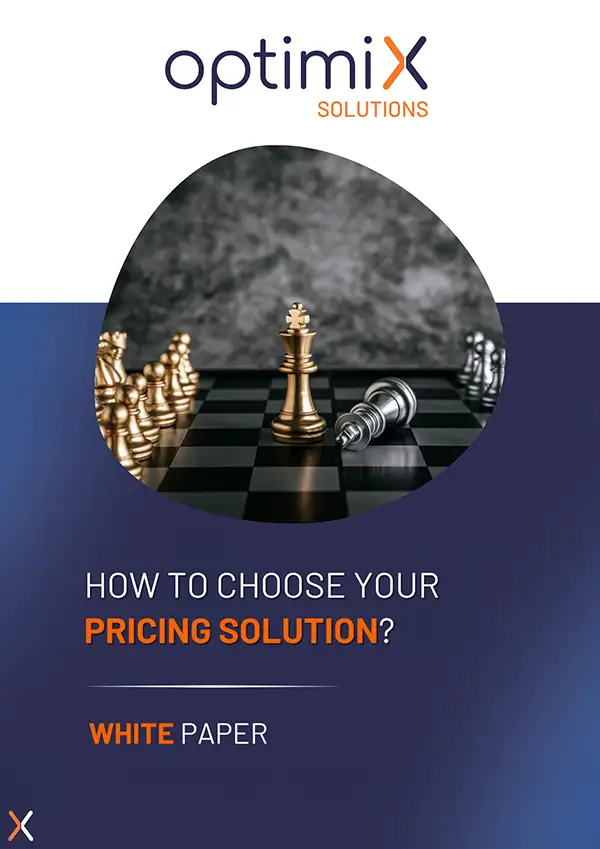The pricing strategy is one of the most powerful levers in modern marketing. It enables you to position your offering in the market, capture perceived value and optimize profitability. In the SaaS sector, where fixed costs are significant and sales cycles are spread out over time, setting the right price is a fundamental issue. A company can no longer simply follow its instincts: it must rely on a rigorous pricing approach, informed by data, competition and customer perception.
Understanding the fundamentals of pricing policy
An effective pricing strategy is based on an understanding of three essential pillars: perceived value, cost, and competitive positioning.
Perceived value is the importance the customer attributes to your offer. When it’s poorly estimated, the price can act as a disincentive to purchase if it’s deemed too high, or unnecessarily reduce the margin if it’s undervalued. That’s why it’s so important to understand what your customers are really willing to pay for the benefit they receive.
At the same time, precise knowledge of your fixed and variable costs enables you to calculate a break-even point and ensure that each sale remains profitable. A price below your production cost weakens your business model in the long term.
Finally, market prices offer a benchmark, but do not dictate the course of action. Aligning yourself with the competition is an option, but not a necessity: your pricing must above all reflect your positioning, your differentiation and the value you bring to your customers.
Mastering different different pricing strategies is essential to know which price is best suited to your positioning.
Skimming: valuing innovation at the right price
The skimming strategy is based on a simple principle: sell a product at a high price at launch, then gradually lower the price to conquer other segments. This model works well for high value-added innovations. The aim is to charge high prices to early adopters, who are prepared to pay a high price to gain rapid access to a differentiating new product.
Take Apple, for example. Each new product starts at a premium price, well above the average market price. This method enables the brand to draw a good price on the first wave of purchases, before gradually lowering its price to widen the audience. Apple’s pricing policy is based on perceived scarcity,brand image and anticipation of demand. This strategy works on condition that the notion of a high price is consistent with the promise of quality.
To find out how to choose your pricing strategy, we invite you to read our full article here
Differentiated pricing: adapting prices to each profile
Another winning strategy is differentiated, or versioned, pricing. This involves setting a specific price for each customer segment, according to their needs, usage or ability to pay. This pricing method maximizes sales by capturing all the market’s pricing sensitivities.
In the SaaS sector, Spotify is a perfect example of this logic. The company offers a free subscription, an individual subscription, a duo subscription and a family subscription. Each profile has its own dedicated offer. This segmentation makes it possible to avoid a low-price strategy, which erodes perceived value, while maintaining an acceptable price level for each use. It’s also an excellent way of encouraging up-selling and loyalty.
Dynamic pricing: adjusting to the context
Yield management and dynamic pricing are major levers today, especially in digital environments. The principle is to calculate prices according to supply and demand, as well as user behavior.
This model has already been widely adopted in the transport and hospitality industries. But in SaaS, it takes a different form: prices are differentiated according to volume, functionalities activated or results obtained. This enables the company to offer a price in line with the value actually delivered. The higher the usage, the lower the unit price – while maintaining an attractive gross margin. This model can also incorporate discounts,temporary reductions or price discrimination based on the business sector.
Pitfalls to avoid
There are some classic pitfalls in price marketing. First, don’t confuse low price with competitiveness. Setting prices too low can damage the perception of quality, and slow growth. Similarly, trying to match competitors’ prices without understanding their pricing structure can lead to a loss of profitability.
Another common mistake is the absence of a clear strategy. Multiplying offers without determining the selling price in relation to value, segment and costs often leads to confusion. Finally, not measuring price sensitivity is like flying blind. You need to study the elasticity of demand, test reactions to different offers and adjust the price according to the results observed.
Use pricing tools to manage your prices: XPA - Optimix Pricing Analytics
In a context where pricing decisions are increasingly complex, the XPA pricing solution – Optimix Pricing Analytics is a true strategic ally. Designed to help companies structure and refine their pricing policy, it integrates dozens of key variables: fixed costs, cost structure, break-even point, expected margins, market prices, demand elasticity and target market share.
Thanks to predictive analysis algorithms and advanced simulation models, XPA enables you to test different pricing scenarios, such as a skimming strategy, a competitive alignment, or a penetration approach. The tool helps you determine the optimal selling price according to your business objectives (volume, profitability, positioning) and your customers’ actual price behavior.
Let’s take the example of an e-commerce player looking to launch a new product range. With XPA, he can model several launch hypotheses and identify the psychologically acceptable price in his sector, while maximizing conversions. It can also measure the impact of a price increase on sales volumes, adjust margins in real time, or simulate a bundle offer to boost perceived value.
In addition, XPA integrates automated price monitoring modules, enabling it to collect and compare prices charged by competitors over different channels or time periods. This feature enables the company to react quickly to a price war, reposition its offers or identify untapped opportunities.
In short, pricing is a strategic decision, reflecting the company’s price positioning, delivered value and commercial ambitions. Successful examples are based on clear models: skimming to value innovation, differentiation to adapt to segments, or dynamic pricing to keep pace with reality. Each model has its advantages, but none can be improvised.
In an ultra-competitive world where e-commerce is redefining the rules of the game, the ability to determine the right rate is becoming a decisive competitive advantage. With tools like Optimix XPA, it’s now possible to establish relevant, data-driven pricing based on measurable objectives. A well thought-out pricing policy doesn’t just sell a product: it sells a promise, and justifies its price.







